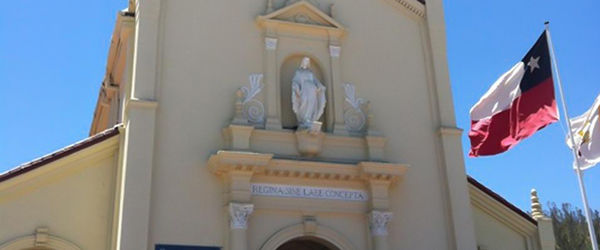Shakeel Syed had visited the Cathedral of Our Lady of the Angels many times before the July 22 Immigration Mass — but this occasion stood out from the others for two reasons. “One is that I myself am an immigrant in this country; this issue of immigration injustice that exists in our country today resonates with me very personally,” says the native of India. “Number two, the celebration coincided with the month of Ramadan, so I was fasting that day. To benefit from the fasting in a spiritual way in a Catholic setting was a very unique experience.”Syed — executive director of the Islamic Shura Council of Southern California — was one of several members of the Los Angeles Council of Religious Leaders in attendance at the Immigration Mass, which was merely one of the most recent celebrations to include people from other faith traditions. From its very day of dedication, the Cathedral of Our Lady of the Angels has welcomed non-Catholics to its celebrations, events, and observances, notes Father Alexei Smith, who was appointed ecumenical and interreligious officer for the Archdiocese of Los Angeles in 2000. Indeed, from its very cornerstone, the Cathedral calls to all people of faith. The stone is inscribed with a quote from Isaiah 56:7: “My house shall be called a house of prayer for all peoples.”“I think the Cathedral serves that noble purpose so well,” says Rabbi Mark S. Diamond. “It is the mother Cathedral for the Roman Catholic archdiocese. Beyond that, the Cathedral is a warm and welcoming home of the faith communities of Southern California.”The first interfaith service held at the Cathedral was on the one-year anniversary of the terrorist attacks of 9/11 — less than two weeks after the Cathedral had opened. “The place was just packed with people of all different faith traditions,” recalls Father Smith, pastor of St. Andrew Russian Greek Catholic Church in El Segundo. Since then, people have moved toward other types of observances of that tragic day; but other interfaith events — among them, the annual Respect Life Mass — have become a Cathedral tradition. At the most recent Respect Life Mass, 40 representatives of various faith communities were in attendance, including people from the Evangelical tradition and the Church of Jesus Christ of Latter-Day Saints, as well as other Christians, Muslims, and Buddhists. “It was quite a testimony to the universality of those messages,” says Father Smith. “One of the reasons the Cathedral was built was to establish a religious center for the city of Los Angeles,” he adds. “It didn’t really have such a center.” When Mayor Antonio Villaraigosa was poised to begin his first term in office, Father Smith recalls, he inquired about beginning his inauguration ceremony with an interfaith prayer service held at the Cathedral. About 1,500 people from various faith traditions attended; representatives surrounded Villaraigosa, forming a “circle of prayer,” and then acted as an escort as the crowd moved to City Hall for the civic inauguration. Similarly, an interfaith prayer service welcomed the city’s new police chief, William Bratton, in 2002. Representatives of different faith traditions read from their sacred texts, and Bratton then received a library of those texts as a welcome gift. On another occasion, the Armenian Catholicos — a patriarch to his church — visited Los Angeles; since the Armenian community had not yet built a cathedral of its own, the Cathedral of Our Lady of the Angels offered a place where the Catholicos could celebrate the liturgy. That was a particularly special event for Father Smith, who was asked to proclaim the epistle during the celebration, which drew a crowd of 3000. The Cathedral has also drawn people together in times of sorrow — such as when a police officer or firefighter has been killed in the line of duty. “Many of those funerals are held at our Cathedral because it’s large enough to accommodate the crowds of people who want to come,” explains Father Smith, noting that many of the deceased have not been Catholics. “It’s a civic center for things religious.”After the death of Pope John Paul II, the Cathedral hosted a memorial prayer service during which leaders from other faith traditions — those who’d had the opportunity to meet with the pope during his 1987 visit to Los Angeles — gladly shared their reflections. “As much as he was your pope, he was our pope too,” says Rabbi Diamond, the executive vice president of the Board of Rabbis of Southern California, part of the Jewish Federation of Greater Los Angeles. “He had such an impact, not only on the worldwide Catholic community, but on all communities.”Like John Paul II, the Cathedral of Our Lady of the Angels is a powerful unifier, the rabbi continues. “[It] is a powerful symbol of what can unite us in the City of Angels.”{gallery width=100 height=100}gallery/2012/0831/interfaith/{/gallery}

